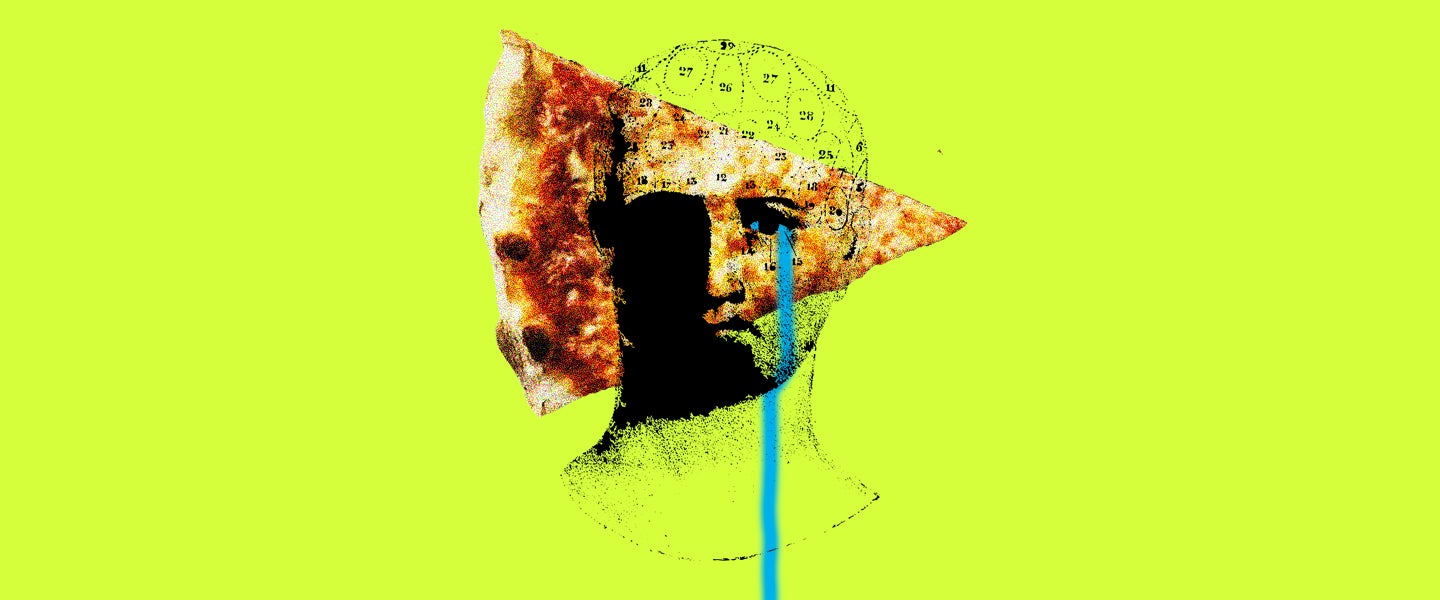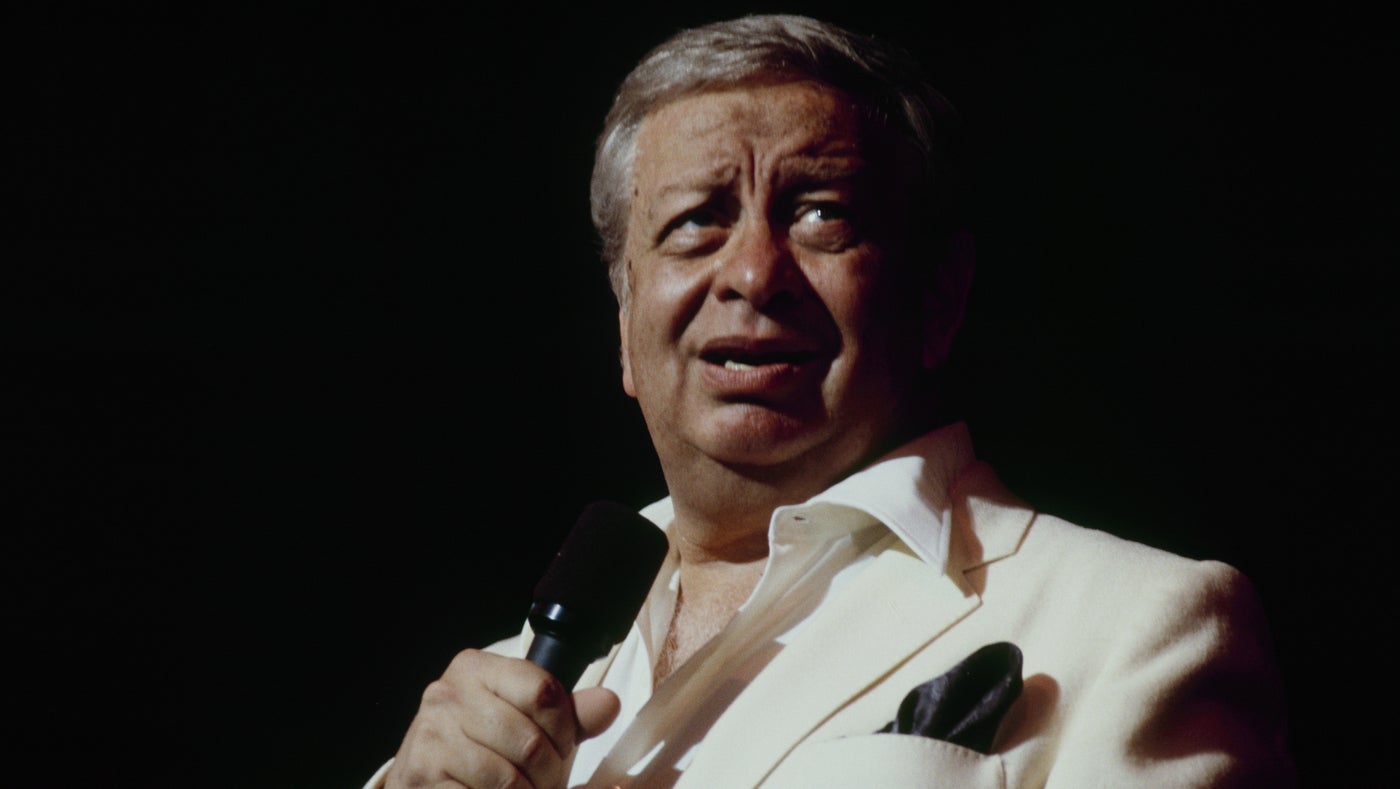 This is the first installment in the Body Issue, our weeklong examination of the male form, where men get real about what they look like, how they feel about it, and everything in between.
This is the first installment in the Body Issue, our weeklong examination of the male form, where men get real about what they look like, how they feel about it, and everything in between.
These days, I drink as much for the courage to eat as I do for the buzz. And so, every Thursday and Friday (my designated drinking nights in my new world of physical fitness and ketosis), I dig through the fridge after a few of my signature Bacardi and Diets like a bear tossing a campsite. I don’t single out any particular foodstuff because that would get in the way of eating all of it — from my children’s leftovers (cold macaroni and cheese, day-old McDonald’s hamburgers, the crackers from a half-finished Lunchable), to the tools of carbicide (tortillas, mini-bagels and M&M-topped Rice Krispie squares).
I can’t say that I enjoy it — or that any of it tastes particularly good — but it’s still among the moments I most look forward to every week. The pleasure is twofold. The first is obvious: the cheap, temporary rush of not-so-delicious trans fats. The second, however, has a much greater pull: the booze-assisted lack of guilt. Because for those five other days of the week, it takes an exhausting amount of willpower to not do the same every time I pass the refrigerator, or every time any kind of pang (from hunger to worry to excitement) strikes me. Essentially, it momentarily allows me to tap out from my self-mandated health kick, which delivers impressive results but at the cost of primal urges and with the requirement of constant vigilance about what has carbs, what has the right kind of fats and what sort of deprivation I can live with.
If I’m being honest with myself, I’ve eaten like shit for the majority of my adult life. I’m from Chicago, so I went from breast milk to encased meat in short order. But in fairness to my parents, I was at least taught portion control and that every sausage should be paired with a vegetable or green of some sort. (My mom is old school enough that there were many nights when I wasn’t allowed to leave the dinner table until I had finished the frozen Brussels sprouts or spinach she had heated up and placed before me.) And yet, the lessons in healthy eating they imparted didn’t really take, because as soon as I got to college, I plumped up on late-night grease that provided my primary source of sustenance.
Youth being what it is, though, none of this truly caught up with me until my 30s, when I stopped attempting to negate the heft of my diet with the type of movement that would prevent it from gathering around my midsection like a flotation device and doubling and tripling my chin. Plus, a lot of the time, the mode of fitness I was pursuing — predominantly 16-inch softball — was mainly an excuse to spend long nights out at a bar afterward where I devoured far more calories (in sugary rum alone, probably) than I burned off puttering around as a power-hitting rec league third baseman. Similarly germane: Those outings couldn’t end until a cantaloupe-size burrito was choke-slamming my stomach lining and providing an acid-reflux chaser to the last drink of the evening.
In more recent years, I also had a good excuse for abandoning the gym: a job that sprawled well into the night and across the world and two near-Irish twin infants/toddlers who required more vigilance than ketosis. I coped with these stressors like any good native son from a tavern city like Chicago — in a cloud of cigarette smoke and by taking residence in a bottle like a model ship. All the while, I ate, fortifying that nicotine and liquor with pretty much whatever looked good, and frankly, felt even better.
Occasionally, I’d diet. Or better put, I’d attempt to look at the nutritional info on the back of the groceries I purchased. My efforts didn’t add up to much, though. Most of all the recommended caloric intake for a man my age (now my mid- to late-30s) and size (6-foot-4, 220 pounds and counting). In that regard, I was probably clearing 2,000 calories in a single sitting on a near-daily basis. (I didn’t miss many of the day’s other two meals often either.) Food, too, dominated the calculus of my social life — and certainly (as well as tellingly), the final phone call or text of the in-office workday to my wife. Almost always when I had a shit day, we decided to order shit food (Domino’s, for the win) that would momentarily alleviate the shittiness. On the weekends of shit weeks, we’d go upscale and hit up whatever local well-regarded slow-food place we’d yet to try, making sure to sample every course, from appetizers to dessert.
But if I understood intellectually that my smoking and drinking — my smoking especially — were the physical manifestation of the stress I claimed to never feel directly (from work, from my toddler terrordome, from leaving my homebase of Chicago for the foreign environs of L.A. while my wife was four-and-a-half months pregnant), I always somehow viewed all that food as a passion/hobby. Yes, even the Domino’s.
I, of course, was completely delusional. I was — and still am on those drunken Thursday and Friday nights — “eating my feelings.” In bad sitcoms and romcoms, this is the exclusive purview of lovelorn women and teenage girls, the stereotypical characters screenwriters have polish off a pint of Chunky Monkey after a bad breakup (in bed, and between sobs). But in real life, it’s us men who are more frequently choking back our problems with food — or stuffing our faces in order to keep the stress down — not our girlfriends/partners/wives.
“Generally speaking, the most common eating disorder among men is binge-eating. Basically, these individuals have bulimia but don’t compensate for their binging with purging, so it’s out-of-control,” Roberto Olivardia, a clinical psychologist at Harvard Medical School and a longtime expert on Body Dysmorphic Disorder among men and boys, told my colleague Tierney Finster at the end of 2017. “A lot of men I work with experience a high degree of stress and emotional suppression. Again, generally speaking, men are more likely to suppress their emotions than women are, and they cope with these suppressed emotions with food — either to numb oneself or to ground oneself.”
“From a biological perspective, food offers a very sensory experience,” Olivardia tells me directly when I reach out to him personally a few months ago. “And in general, engaging in something sensory-oriented is among the best stress-management techniques. Because when you’re stressed and anxious, you’re in your head. Engaging in your senses — What do you see now? What do you hear now? What do you taste now? What do you smell now? What do you feel now? — is a great way to get you back in your body. Food does that almost single handedly. I mean, you’re smelling it, you’re tasting it, you’re touching it, you’re seeing it, and in some cases, you’re even hearing a crunch.
“Food also carries these powerful associative memories. All of us have a certain food mom or dad used to cook for us as a kid, that years later as adults, we see on a menu and think, I remember the smell of the house when my mom would make a lasagna. The other thing is that it’s accessible. Unlike drugs, which obviously are unhealthy, food is legal and always there.”
As for why our taste goes to shit in such moments of weakness: “We crave sugar. We crave fat. We crave simple carbs. And the reason we crave them is because they induce neuro-chemical changes that elevate our levels of dopamine, a neurotransmitter that gives us a feeling of reward or pleasure in the brain. It often increases levels of serotonin in the brain as well, which induces a sense of calmness and tranquility. So without even knowing it, we’re biologically wired to crave those kinds of foods when we want to be soothed and ground ourselves.”
If I didn’t necessarily intuit all of that evolutionary psychology — and trust me, I didn’t — I did know that I was starting to feel awful. In particular, there were random days when I felt short of breath for long enough that it freaked me out. I remember one specific night after Thanksgiving in 2016 in which I piled an endless procession of pizza, pints of beer and Camel Blues onto the stew of day-old brined poultry and starches that roiled beneath my ever-growing gut. In the moment — and hours — afterward, I felt as though I was suffering from some combination of panic attack (from the shortness of breath) and mild heart attack (from the chest pains).
Stopping, however, seemed impossible. “Even when people don’t seek out food as a stress release — even when people aren’t saying, ‘I’m going to have a gallon of ice cream to de-stress’ — they have to eat, and a lot of times when we eat and it feels good, it’s easy to say, ‘Well, let me eat more, and I’ll feel even better,’” Olivardia explains. “But it can eventually create a situation where we’re having too much of a good thing, and we start to feel not so good after a while.”
Instead, I attempted to triage the situation via counterattack — namely, the Couch to 5K app, which got my ass off the eponymous couch and began stoking my heart rate in an (ideally) non-life threatening way. Still, this was in addition to my smoking, drinking and eating, not in lieu of it. Somehow I figured running would atone for these sins and restore my lungs, liver and waistline to their former glory despite the unrelenting punishment I was putting them through.
But alas, my lungs were shot. The smokes went first then. (Just as I now drink to eat, I run not to smoke, with even the most innocent puff or single cheat cigarette perceptible for days afterward as I plod along the sidewalks of Los Angeles.)
The booze and food were more stubborn, in large part because I could run with them. I perfected the Couch to Hungover 5K, and because I began clocking about 25 miles a week, I was perpetually ravenous. Given my unquenchable hunger, I convinced myself that food was now fuel, and that the grade of gasoline was irrelevant (the same for topping off my tank every time I sat before the breakfast/lunch/dinner table). It all simply powered my internal steam engine.
It didn’t take Olivardia, though, to recognize that the stacks of crap on my plate were less about energy and more about soothing my stress. Again, stress that I honestly didn’t feel. (Maybe because I was eating it too fast?) I did, however, feel embarrassed that despite my mileage, my physique remained as doughy as my diet. Or more accurately, my body would seem to firm up temporarily, only to burst forth larger than before whenever I began to plateau or master a certain distance. On race days — in 2017, I did roughly 30 competitive 5Ks and 10Ks — the elderly and infirm would lap me with astonishing regularity, the lies I was telling myself harder to believe with each passing septuagenarian.
Because I couldn’t outrun them (or those self-told lies) I sought help. Not from a therapist — that would have been admitting that I couldn’t handle things myself and that the stress had won, or that I couldn’t beat it back with an even stronger counterattack and intensity that a mere fitness app couldn’t muster. (I HAVE AN IRON WILL GODDAMMIT.) It also would have ceded control, something I struggle with in all aspects of my life. (I haven’t gotten that checked out by a professional either — sadly, rendering me exactly like my fellow man, many of whom also eschew psychiatry for less intrusive, more dude-ly sounding quasi-disciplines like “life coaching.”) Maybe more to the point, for better or worse, I believed that a sound body would make for a sounder mind and somehow choke the stress from my being. Or that physical strength would keep me impenetrable from worry. In my defense, I think it is more chicken-and-egg-y than not. The rest I’m not sure I can defend, but it is the path that I sought.
All of which is to say that I hired a personal trainer, who was tasked with reshaping me in the ways I couldn’t myself.
A year later, that’s more or less what’s happened. I’m thinner and stronger than ever, a full 60 pounds lighter than my heaviest moments and even 15 pounds lighter than my trimmest college days. The transformation is still new enough that it dominates small talk, especially with those I haven’t seen in a while, who generally do a double-take before asking if I’ve lost weight (a moment that’s more rewarding than my FaceTime reflection). But it’s becoming old-hat enough, too, that my abandoned bulk is harder and harder to remember. I sometimes carry around my four-year-old, who checks in at right around 40 pounds, and marvel that I lost the equivalent of 1.5 of him, astonished that it never weighed me down in the same way. Or if it did, that I accepted it as a fact of life.
In addition to crushingly early two-hour morning workouts at the gym, it’s largely the product of abstinence — no drinking and no eating anything that results in dopamine and/or serotonin. Aside from the occasional steak, there’s a lot of kale, cauliflower and cashews on my plate these days. And those drunken cheats — and pre-planned drunken nights — are part of a careful calculus that ensures my calorie count never surpasses what I’m able to burn off either at the gym or with an extra run (or an extra few miles on a scheduled run).
This also makes me as much a part of my male brethren as it does like my grandmother, who used to weigh out all of her food on a tiny white kitchen scale as part of her Weight Watchers program. “I see a lot of men who engage in what we call ‘subclinical eating disorders,’” says Olivardia. “They may eat healthy, but then they go to the gym and work out for four hours. In those cases, their exercise functions the same as a purge.”
For me, it’s about purging the shame as much as anything else. Case in point: This summer, I traveled 120 miles south to San Diego to watch my hometown Chicago Cubs play the Padres. For my seven-day stay in the city — and certainly for the three-game Cubs-Padres series — I vowed to ditch my diet and early gym mornings. I wouldn’t eat my stress, because I wouldn’t stress about eating (or any other aspect of my life). And yet, the first night of the trip, I found myself in a dark corner outside one of Petco Park’s concession stands, a single piece of soft pretzel in my hand, the remaining portions firmly planted in my stomach. (Full disclosure: It was my second pretzel of the night; there also had been, I believe, some tacos, nachos and peanuts.)
I was doing my best to avoid detection, turned inward against a concrete wall, placing the pretzel in my mouth in such a way that it could easily be confused with me wiping my brow, not stuffing my face. No one, however, said shit to me, or even gave me a second look.
After all, I was only hiding from myself.
An abbreviated version of this piece can be found in the forthcoming “Masculinity Issue” of the mental health publication Anxy. You can pre-order it here.

